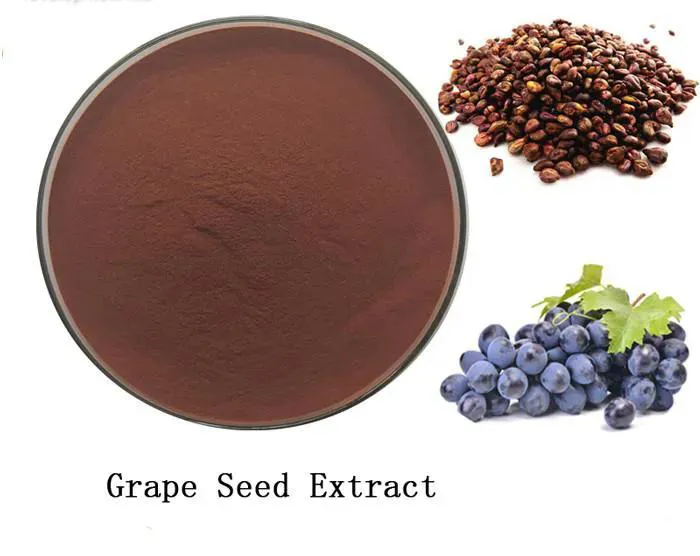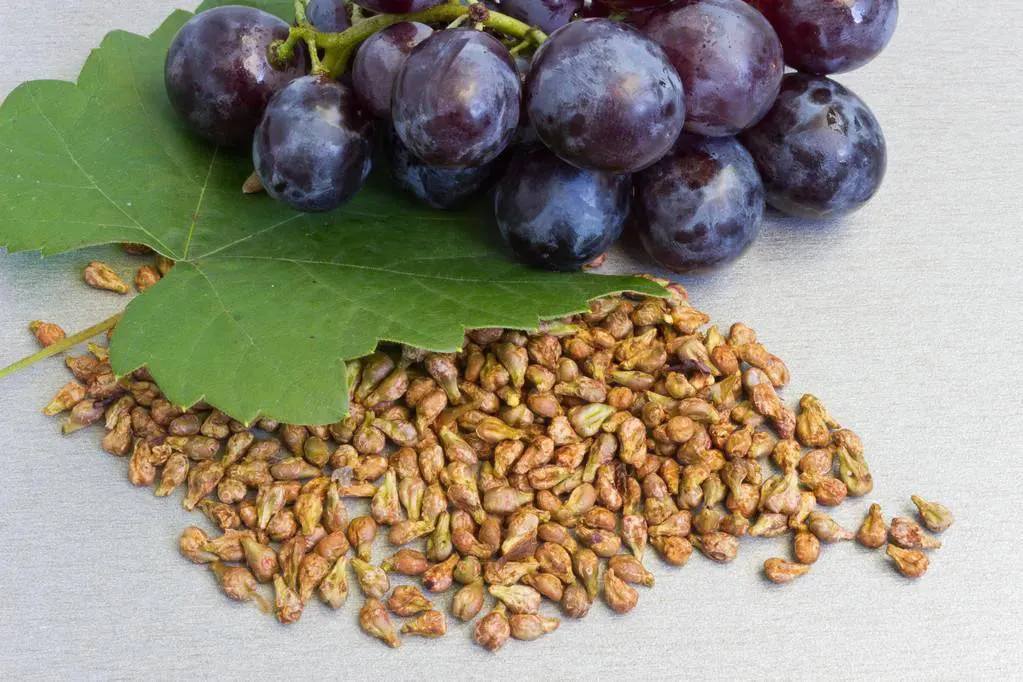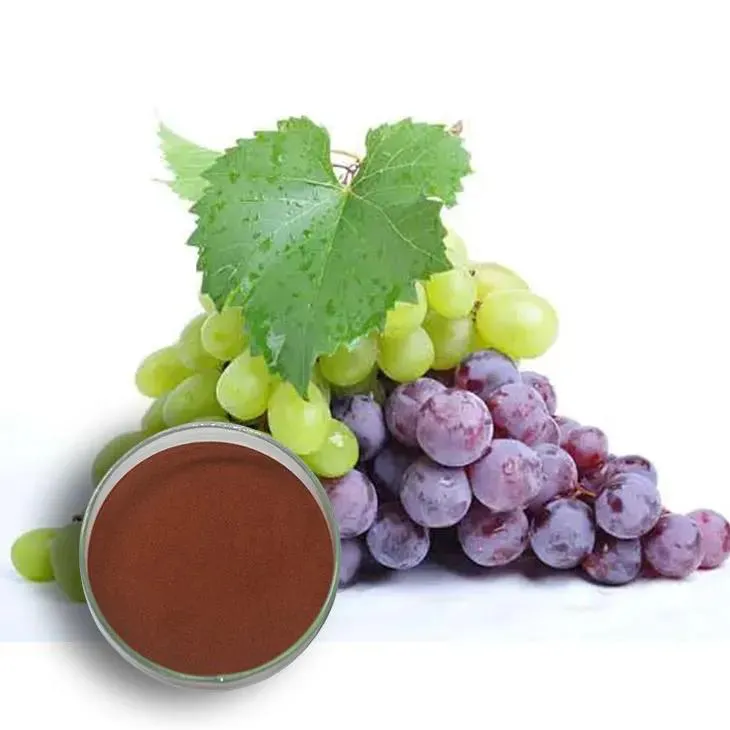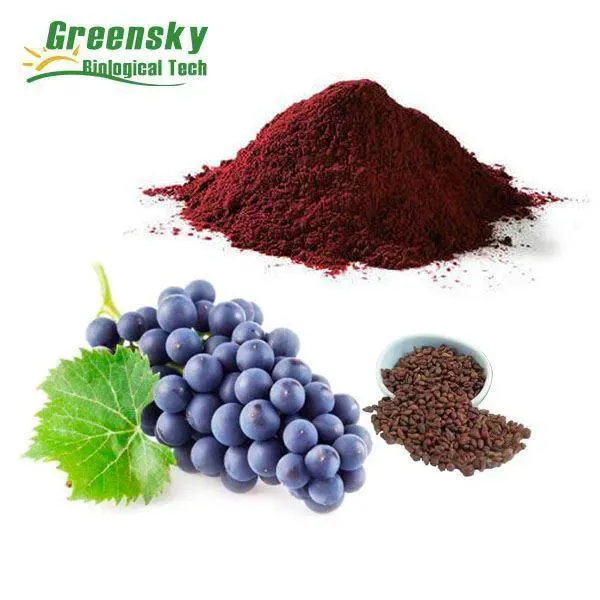- 0086-571-85302990
- sales@greenskybio.com
Versatile Applications: Exploring the Uses of Dehydrated Grape Seed Extract
2024-08-17

1. Introduction
Dehydrated Grape Seed Extract has been increasingly recognized in recent years for its remarkable properties and diverse applications. It is derived from grape seeds, which are by - products of the winemaking and grape juice production processes. Through a dehydration process, the valuable components of the grape seeds are concentrated, resulting in a substance that is rich in a variety of bioactive compounds. One of the most significant aspects of dehydrated Grape Seed Extract is its high antioxidant content. Antioxidants are substances that can prevent or slow damage to cells caused by free radicals, which are unstable molecules produced during normal cell metabolism as well as in response to environmental factors such as pollution, radiation, and smoking. The presence of these antioxidants endows dehydrated Grape Seed Extract with a wide range of potential uses, from skincare to health promotion and even in the food industry.

2. Skincare Applications
2.1. Combating Oxidative Stress
The skin is constantly exposed to environmental stressors that can lead to oxidative stress. Oxidative stress is a major contributor to skin aging. Free radicals in the environment can attack the skin cells, causing damage to the cellular components such as DNA, lipids, and proteins. Dehydrated grape seed extract, with its potent antioxidant properties, can neutralize these free radicals. This helps to protect the skin cells from damage and maintain their normal function. For example, studies have shown that the antioxidants in grape seed extract, such as proanthocyanidins, can scavenge free radicals more effectively than some other well - known antioxidants like vitamin C and E.
2.2. Reducing Signs of Aging
As mentioned above, by combating oxidative stress, dehydrated grape seed extract can play a significant role in reducing signs of aging. Wrinkles and fine lines are two of the most visible signs of skin aging. The extract can stimulate the production of collagen in the skin. Collagen is a protein that provides structural support to the skin, keeping it firm and elastic. As we age, the production of collagen decreases, leading to the formation of wrinkles and sagging skin. By promoting collagen synthesis, grape seed extract can help to fill in the fine lines and wrinkles, making the skin look smoother and more youthful. Additionally, it can also improve the skin's moisture - retaining ability, which is another important factor in maintaining a healthy and youthful - looking complexion.
2.3. Protecting Against UV Damage
Exposure to ultraviolet (UV) radiation from the sun is one of the leading causes of skin damage. UV radiation can cause sunburn, premature aging, and an increased risk of skin cancer. Dehydrated grape seed extract has been shown to have some protective effects against UV damage. While it is not a substitute for sunscreen, it can work in conjunction with sun protection measures. The antioxidants in the extract can help to repair the damage caused by UV radiation at the cellular level. They can also reduce the inflammation caused by UV exposure, which is an important step in preventing long - term skin damage.
3. Health Applications
3.1. Heart Health
Inflammation is a key factor in the development of heart diseases. Dehydrated grape seed extract may contribute to heart health by potentially reducing inflammation in the body. The antioxidants in the extract can inhibit the production of inflammatory cytokines, which are signaling molecules that play a role in the inflammatory response. Additionally, grape seed extract may also have a positive impact on blood vessels. It can help to relax the blood vessels, improving blood flow and reducing blood pressure. This, in turn, can lower the risk of developing cardiovascular diseases such as heart attacks and strokes. Some studies have also suggested that grape seed extract may have a beneficial effect on cholesterol levels, helping to reduce LDL (bad) cholesterol and increase HDL (good) cholesterol.
3.2. Anti - cancer Potential
Although more research is needed, there is some evidence to suggest that dehydrated grape seed extract may have anti - cancer properties. The antioxidants in the extract can protect cells from DNA damage, which is a crucial step in the development of cancer. Some in - vitro and animal studies have shown that grape seed extract can inhibit the growth and spread of cancer cells. For example, it has been studied for its potential role in breast cancer, prostate cancer, and colon cancer. However, it is important to note that these findings are not conclusive, and more human clinical trials are required to determine the true anti - cancer potential of grape seed extract.
3.3. Brain Health
Oxidative stress and inflammation also play a role in the development of neurodegenerative diseases such as Alzheimer's and Parkinson's. Dehydrated grape seed extract, with its antioxidant and anti - inflammatory properties, may have potential benefits for brain health. It can protect brain cells from damage caused by free radicals and reduce inflammation in the brain. Some studies have also suggested that grape seed extract may improve cognitive function, although more research is needed to fully understand its effects on the brain.
4. Food Industry Applications
4.1. Food Preservation
In the food industry, one of the major challenges is to prevent food spoilage and extend the shelf life of products. Dehydrated grape seed extract can be used as a natural preservative. The antioxidants in the extract can prevent the oxidation of fats and oils in food, which is a major cause of rancidity. This can be particularly useful for products such as nuts, oils, and processed foods that are high in fats. By inhibiting oxidation, grape seed extract can help to maintain the freshness, flavor, and nutritional value of food products for a longer period.
4.2. Enhancing Nutritional Value
As a rich source of antioxidants and other bioactive compounds, dehydrated grape seed extract can be added to food products to enhance their nutritional value. For example, it can be incorporated into beverages such as juices and smoothies, or added to baked goods like bread and muffins. This can provide consumers with an additional source of antioxidants, which are beneficial for overall health. Moreover, the addition of grape seed extract can also improve the taste and color of some food products, making them more appealing to consumers.
5. Other Potential Applications
5.1. Cosmetic Industry Beyond Skincare
In addition to skincare products, dehydrated grape seed extract can also be used in other cosmetic applications. For example, it can be added to haircare products such as shampoos and conditioners. The antioxidants in the extract can protect the hair from damage caused by environmental factors such as pollution and UV radiation. It can also improve the strength and shine of the hair, making it look healthier. In nail care products, grape seed extract can help to strengthen the nails and prevent them from becoming brittle.
5.2. Veterinary Applications
There is also potential for the use of dehydrated grape seed extract in veterinary medicine. Just as in humans, animals can also benefit from the antioxidant and anti - inflammatory properties of the extract. For example, it may be used to treat skin conditions in animals, or to promote heart health in pets. However, more research is needed to determine the appropriate dosages and treatment regimens for different animals.6. Conclusion
Dehydrated grape seed extract is a versatile substance with a wide range of applications. In the skincare realm, it offers multiple benefits from combating oxidative stress to reducing signs of aging and protecting against UV damage. In the health field, it has potential implications for heart health, anti - cancer effects, and brain health. In the food industry, it can be used for preservation and enhancing nutritional value. Additionally, it has other potential applications in the cosmetic industry beyond skincare and in veterinary medicine. However, while the potential of dehydrated grape seed extract is promising, more research is still needed to fully understand its mechanisms of action and to optimize its use in different applications. As our understanding of this valuable extract continues to grow, it is likely that we will see even more innovative uses in the future.
FAQ:
What are the main antioxidants in dehydrated grape seed extract?
Dehydrated grape seed extract is rich in various antioxidants, with proanthocyanidins being one of the main ones. Proanthocyanidins are powerful antioxidants that can neutralize free radicals in the body, which helps in protecting cells from oxidative damage.
How does dehydrated grape seed extract combat signs of aging in the skin?
The antioxidants in dehydrated grape seed extract combat oxidative stress in the skin. Oxidative stress can damage skin cells and lead to the formation of wrinkles and fine lines. By neutralizing free radicals, the extract helps to maintain the integrity of skin cells, reducing the appearance of these signs of aging.
Can dehydrated grape seed extract really improve heart health?
There is evidence to suggest that it may contribute to heart health. It potentially reduces inflammation in the body, and chronic inflammation is associated with various heart - related problems. However, more research is still needed to fully understand the extent of its impact on heart health.
What role does dehydrated grape seed extract play in food preservation?
Dehydrated grape seed extract can act as a natural preservative in the food industry. Its antioxidant properties can prevent the oxidation of fats and oils in food, which is one of the main causes of food spoilage. This helps to extend the shelf - life of food products.
How can dehydrated grape seed extract enhance the nutritional value of food?
As it is rich in antioxidants and other beneficial compounds, when added to food, it can increase the overall nutritional value. For example, it can provide additional antioxidant protection to the body when consumed as part of a meal, which may help in preventing various diseases associated with oxidative stress.
Related literature
- The Antioxidant Properties of Grape Seed Extract: A Review"
- "Applications of Grape Seed Extract in Skincare: Current Research"
- "Grape Seed Extract and Heart Health: New Findings"
- "The Use of Grape Seed Extract in Food Preservation and Nutritional Enhancement"
- ▶ Hesperidin
- ▶ citrus bioflavonoids
- ▶ plant extract
- ▶ lycopene
- ▶ Diosmin
- ▶ Grape seed extract
- ▶ Sea buckthorn Juice Powder
- ▶ Beetroot powder
- ▶ Hops Extract
- ▶ Artichoke Extract
- ▶ Reishi mushroom extract
- ▶ Astaxanthin
- ▶ Green Tea Extract
- ▶ Curcumin Extract
- ▶ Horse Chestnut Extract
- ▶ Other Problems
- ▶ Boswellia Serrata Extract
- ▶ Resveratrol Extract
- ▶ Marigold Extract
- ▶ Grape Leaf Extract
- ▶ blog3
- ▶ blog4
- ▶ blog5
-
Lotus leaf extract
2024-08-17
-
Gynostemma pentaphyllum extract
2024-08-17
-
Hops Extract
2024-08-17
-
Tinospora cordifolia extract
2024-08-17
-
Curcumin
2024-08-17
-
Nettle Root Extract
2024-08-17
-
Peppermint Extract Powder
2024-08-17
-
Buckthorn bark extract
2024-08-17
-
Sugarcane Extract
2024-08-17
-
Curcuma Longa Extract
2024-08-17





















